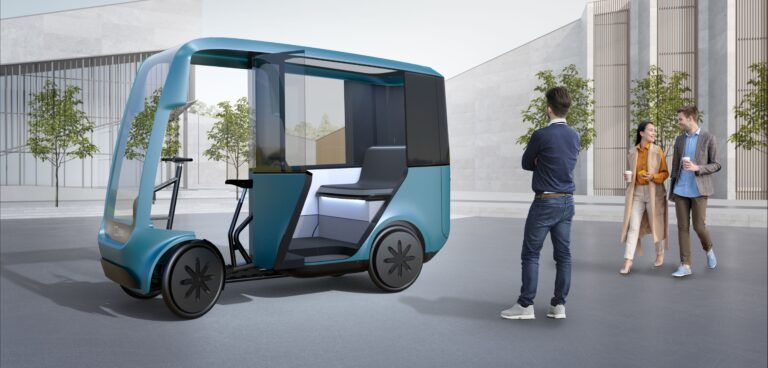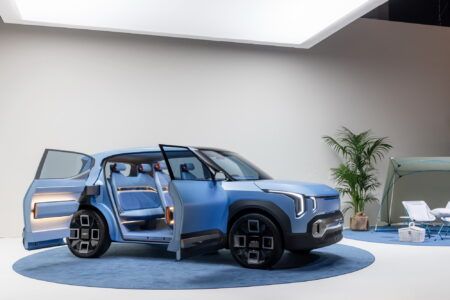Electric Assisted Vehicles, the Oxfordshire-based micro-mobility manufacturer, has today revealed the latest design in their range of ultra-lightweight, zero emissions, urban commercial vehicles produced to ease congestion, reduce environmental and infrastructure impact as well as improve efficiency within towns and cities worldwide.
The ‘EAV Taxi’ is a development of the recently launched ‘EAV2cubed’ eCargo vehicle. Having developed a separate front cab with multiple rear box and pod solutions for the already successful cargo application, EAV have now been able to create a passenger carrying solution on the established and patented Cloudframe chassis.
“The main focus for EAV is to continue demonstrating that weight is the enemy of efficiency and therefore of energy conservation.” commented founder and CEO of EAV, Adam Barmby. “Electric cars, vans and taxis are actually hugely inefficient in their energy usage. They’re large and heavy and a lot of energy is simply wasted just moving their own weight around. We looked closely at both Taxis and PHVs in urban environments and immediately saw we could be more efficient, cleaner, healthier and just as comfortable at a much lower cost. The fact that we’re as safe and much better for the environment and city infrastructure are purely added benefits.”
There are over 375,000 Taxis and Private Hire Vehicles currently in the UK with around 200,000 individual taxi journeys in London alone every day. 65% of all Taxi and PHV journeys are single occupancy and are usually between 1 and 5 miles. EAV believes that a lot of resources and energy are being wasted simply moving one or two people a short distance.
“Our experience in running trials and now supplying EAVs to the logistics industry internationally has shown us that, due to levels of congestion in towns and cities, we can be more efficient than vans and cars.” continued Adam Barmby. “The value of the global e-hailing market for Taxis and PHVs is forecast to hit £150bn by 2025 which is a lot of journeys meaning a lot of emissions, weight and congestion in cities worldwide. The EAV Taxi will help to significantly reduce those issues while efficiently and comfortably delivering the customer to their desired location.”
The EAV Taxi, provisionally named the ‘EAVGo!’, has been designed to carry up to two passengers in a new rear compartment which has full suspension and lightweight side doors. Inside the EAV Taxi the seats are extremely comfortable fitted with memory foam seat and back cushions. A video screen for journey or location information and cabin heating or cooling to create a comfortable ambient temperature are all part of the EAV Taxi experience. A luggage compartment under the seats is available with access either from the rear or from the side and it can comfortably accept a good size suitcase.
“The design offers all the benefits and advantages of a taxi or PHV without being oversized or overweight.” said Nigel Gordon-Stewart, Executive Chairman at EAV. “We’re 90% lighter than any hybrid or electric car and, if we just replaced one hybrid Uber with an EAV Taxi, we would save about 9.2 metric tons of Carbon Dioxide emissions in one year alone. Our energy usage is a fraction of an electric taxi and we don’t need an infrastructure to charge our batteries, just a normal plug socket. Most importantly, the EAV Taxi would get a passenger to their destination in any town or city just as quickly, safely and comfortably as any other taxi or PHV. With a number of current taxis and PHVs shortly being unable to operate in ULEZ towns and cities without paying high charges, the EAV Taxi is the perfect solution”
EAV plan to produce the first prototype EAV Taxi in November 2020 with production EAV Taxis deliveries taking place in the Spring 2021.





